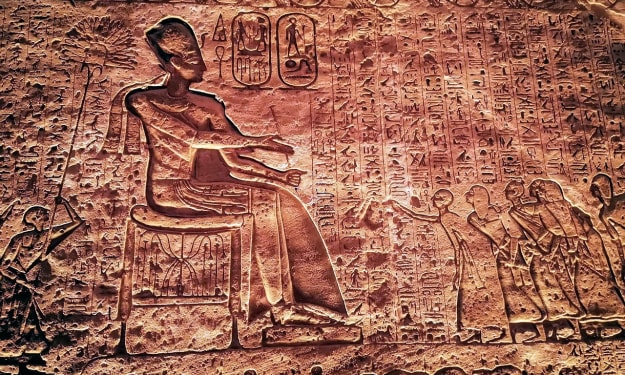space
Space: The Final Frontier. Exploring space developments and theorizing about how humans fit into the universe.
Exploring the Elemental Universe: From Hydrogen to Oganesson
British spelling. The five lightest elements in the universe. <><><> 1/5 I’m a Hydrogen Atom (H) With Atomic Number 1 By far, I am the most abundant chemical element in the universe.
A B ForbesPublished about 9 hours ago in Futurism

The old kingdom Agartha
The old kingdom Agartha Agartha is not a myth or a fantasy but a reality hidden from us for centuries. The theory, known as the Hollow Earth Theory, states that the Earth is not a solid sphere but a hollow one with a vast cavity inside. In this cavity, a small sun illuminates the inner world, creating a lush, livable environment on the flip side of the Earth's surface.
Cosmic SecretsPublished 2 days ago in Futurism

A True Story of an Alien Contact
Imagine this: You are the President of a mighty nation, and one day, you receive a visitor from another planet. He claims he comes in peace and has a message for you and the world. He says he can help you solve your problems and join a galactic community of other civilizations. He also mentions that he has only three years to complete his mission. If you were in this situation, what would you do? This is not a science fiction scenario. It is reportedly what happened in the 1950s when a friendly alien named Valiant Thor visited Earth from Venus. His story is considered one of the most fascinating and controversial cases of alien contact ever recorded. It is also one of the most inspiring and challenging stories ever told.
Cosmic SecretsPublished 2 days ago in Futurism

Aestas ¤ The Yellow Balloon
As humanity begins to tame the stars above, at what point do a group of colonists turn into a unique, indigenous people who will band together to protect their homeland... no matter what?
Tales of Space and Life
British spelling. Here are two of them. <><><> 1/2 The remarkable scale of atoms. Atoms are the smallest particles of chemical elements.
A B ForbesPublished 3 days ago in Futurism

The signal from Centauri
The search for extraterrestrial intelligence has been a topic of fascination for humanity for decades. The scientific community has recently been captivated by the mysterious signal from Proxima Centauri, our closest stellar neighbor, detected by the Breakthrough Listen project.
Cosmic SecretsPublished 5 days ago in Futurism

The Mass UFO sighting in Ancient Egypt
The fascination with unidentified flying objects (UFOs) is not a modern phenomenon. Throughout history, there have been numerous accounts of mysterious objects in the sky, many of which predate the invention of flight by millennia.
Cosmic SecretsPublished 5 days ago in Futurism

The Odd Theory That the Universe Contains Just One Electron
The observable cosmos is thought to contain about 1082 atoms. You can therefore reasonably assume that there are at least 10,000,000,000,000,000,000,000,000,000,000,000,000,000,000,000,000,000,000,000,000,000 in the observable universe as well, since every element in the periodic table contains at least one electron.
Francis DamiPublished 8 days ago in FuturismCould the Unthinkable Be True?
British spelling. I write easy-to-understand educational stories about the universe and life. You may find them interesting.
A B ForbesPublished 10 days ago in FuturismThe Gargantuan Place We Call the Universe
I write easy-to-understand stories about the universe and life, here are three of them. Enjoy. British spelling. <><> 1/3
A B ForbesPublished 12 days ago in Futurism

DARK ENERGY VARIATIONS MAY UNLOCK COSMIC MYSTERIES
As the week of the total solar eclipse in this part of the world winds down, I’m reminded of the eerie but sublime darkness and sudden cold we experienced that afternoon.
David Morton RintoulPublished 13 days ago in Futurism

Into the Abyss
In the depths of the cosmos, where the fabric of space-time twists and bends, lies a phenomenon so enigmatic and mysterious that it defies comprehension: the black hole. Within its dark embrace, the laws of physics break down, and the very essence of reality is warped beyond recognition. Yet, for a group of intrepid explorers aboard the starship Odyssey, the allure of these cosmic behemoths is irresistible.


















